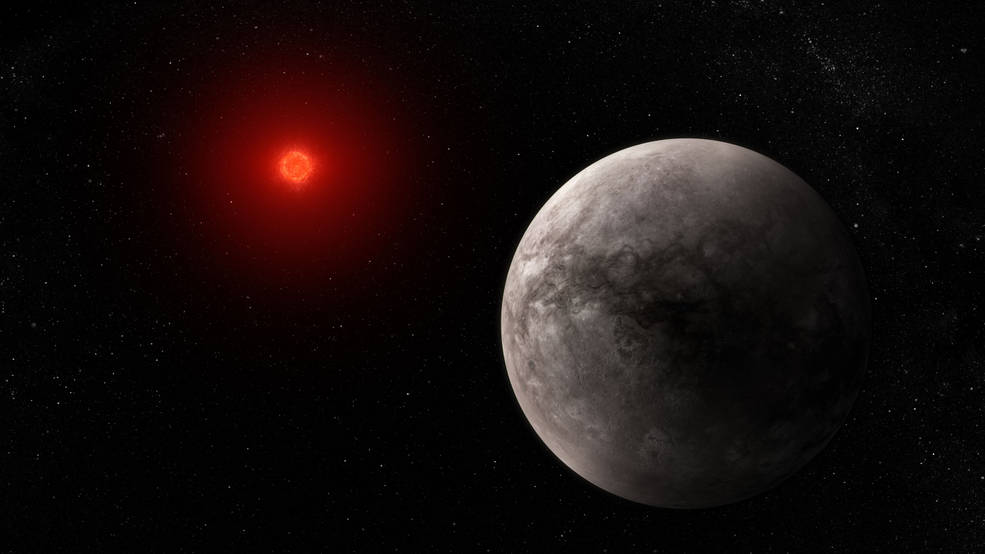This Earth-size rocky exoplanet has no significant atmosphere, Webb reveals

The James Webb Space Telescope (JWST) has found that the dayside temperature of TRAPPIST-1 b, a rocky planet that orbits an ultracool red dwarf star (or M dwarf) 40 light-years from Earth, is about 500 kelvins (roughly 450 degrees Fahrenheit), suggesting that it has no significant atmosphere.
The planet's thermal emission, which is the heat energy released in the form of infrared light detected by the Mid-Infrared Instrument (MIRI) on Webb, is the basis of this measurement.
This is the first time that thermal emission of TRAPPIST-1 b, or any planet as small as Earth and as cool as the rocky planets in our solar system, has been observed.
"No previous telescopes have had the sensitivity to measure such dim mid-infrared light," said Thomas Greene, an astrophysicist at NASA's Ames Research Center and lead author of the new study.
TRAPPIST-1 b: We give it a one (M-dwarf) star review; it lacks atmosphere. ⭐Webb found the dayside temperature of this rocky exoplanet to be about 450º F (227º C) — suggesting it has no significant atmosphere: https://t.co/TGYqguDgT4Here’s why this is a big deal ⬇️ pic.twitter.com/7kW8nKxC4U
— NASA Webb Telescope (@NASAWebb) March 27, 2023
TRAPPIST-1 b is the innermost of seven known planets in the TRAPPIST-1 system. Although previous observations of this rocky world using the Hubble Space Telescope and Spitzer telescope did not detect any signs of a puffy atmosphere, they were unable to completely dismiss the possibility of a dense atmosphere.
The international research team used a technique called secondary eclipse photometry, in which Webb's MIRI measured the change in brightness from the TRAPPIST-1 system as the planet moved behind the star. Astronomers can measure the infrared light emitted by a planet by subtracting the brightness of its star from the combined brightness of the star and planet.
"There was one target that I dreamed of having. And it was this one. This is the first time we can detect the emission from a rocky, temperate planet. It's a really important step in the story of discovering exoplanets," said Pierre-Olivier Lagage from CEA, a co-author on the paper published in the journal Nature.










